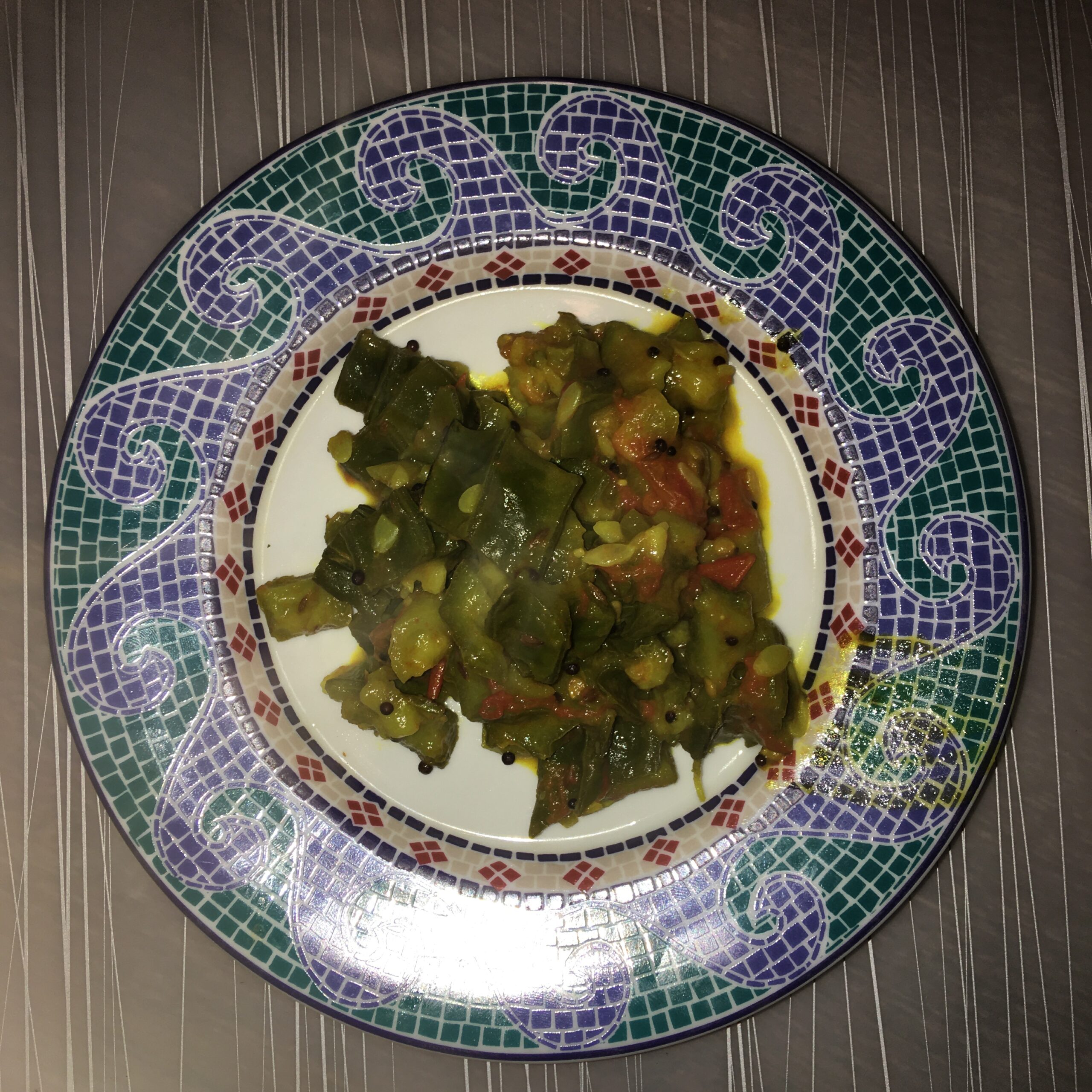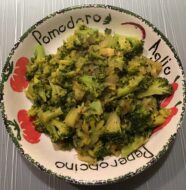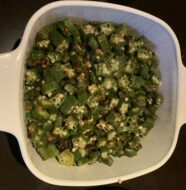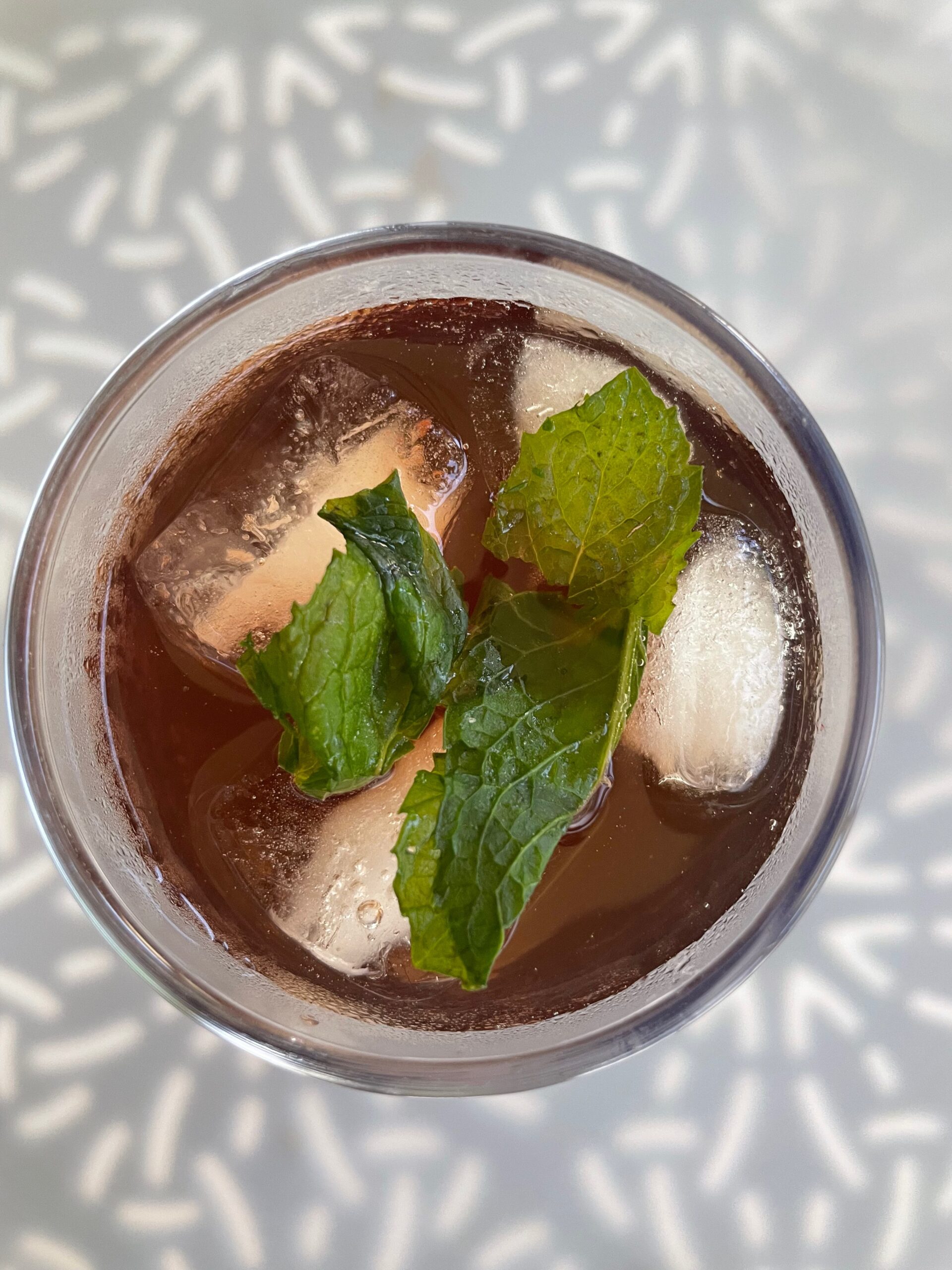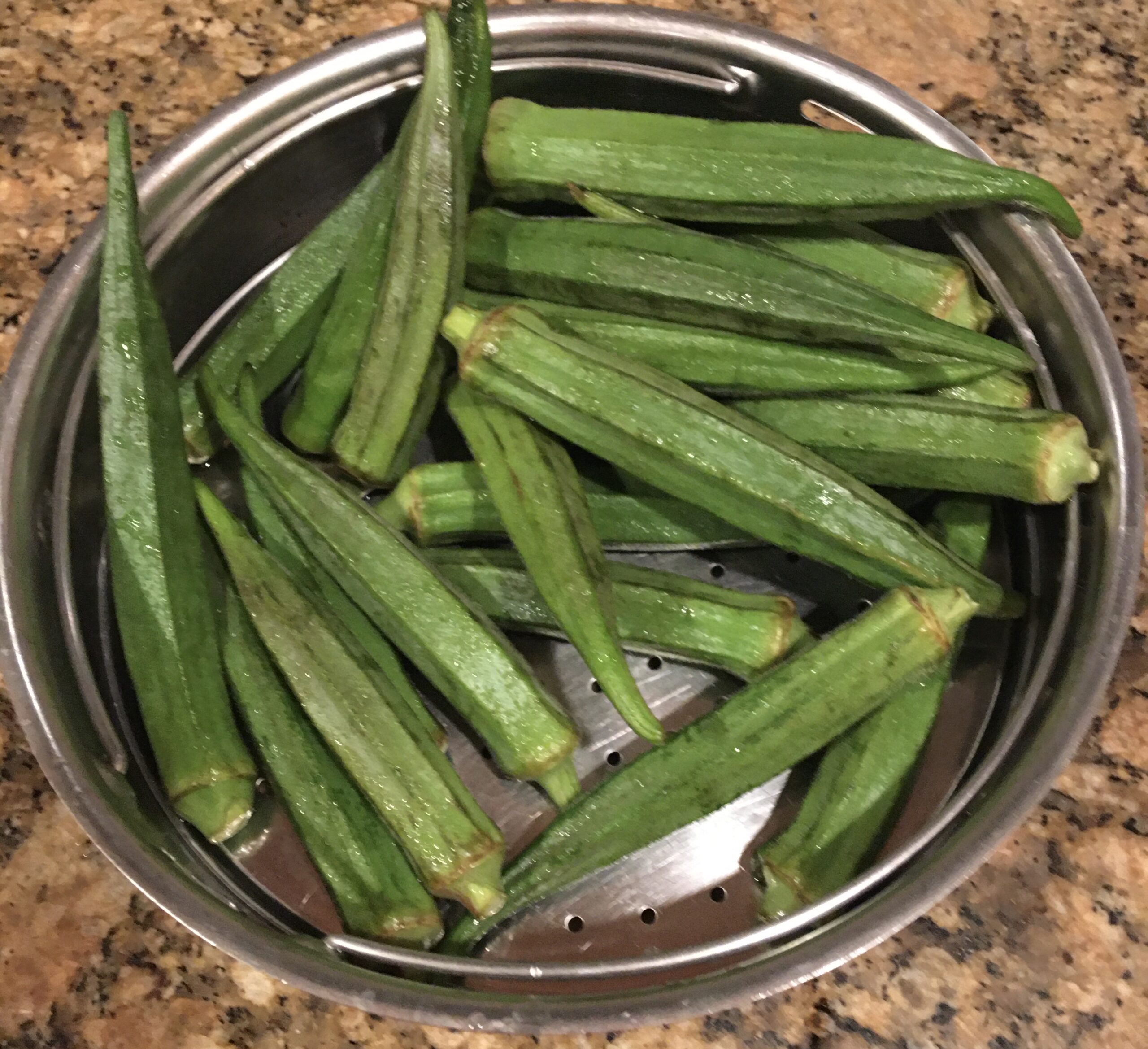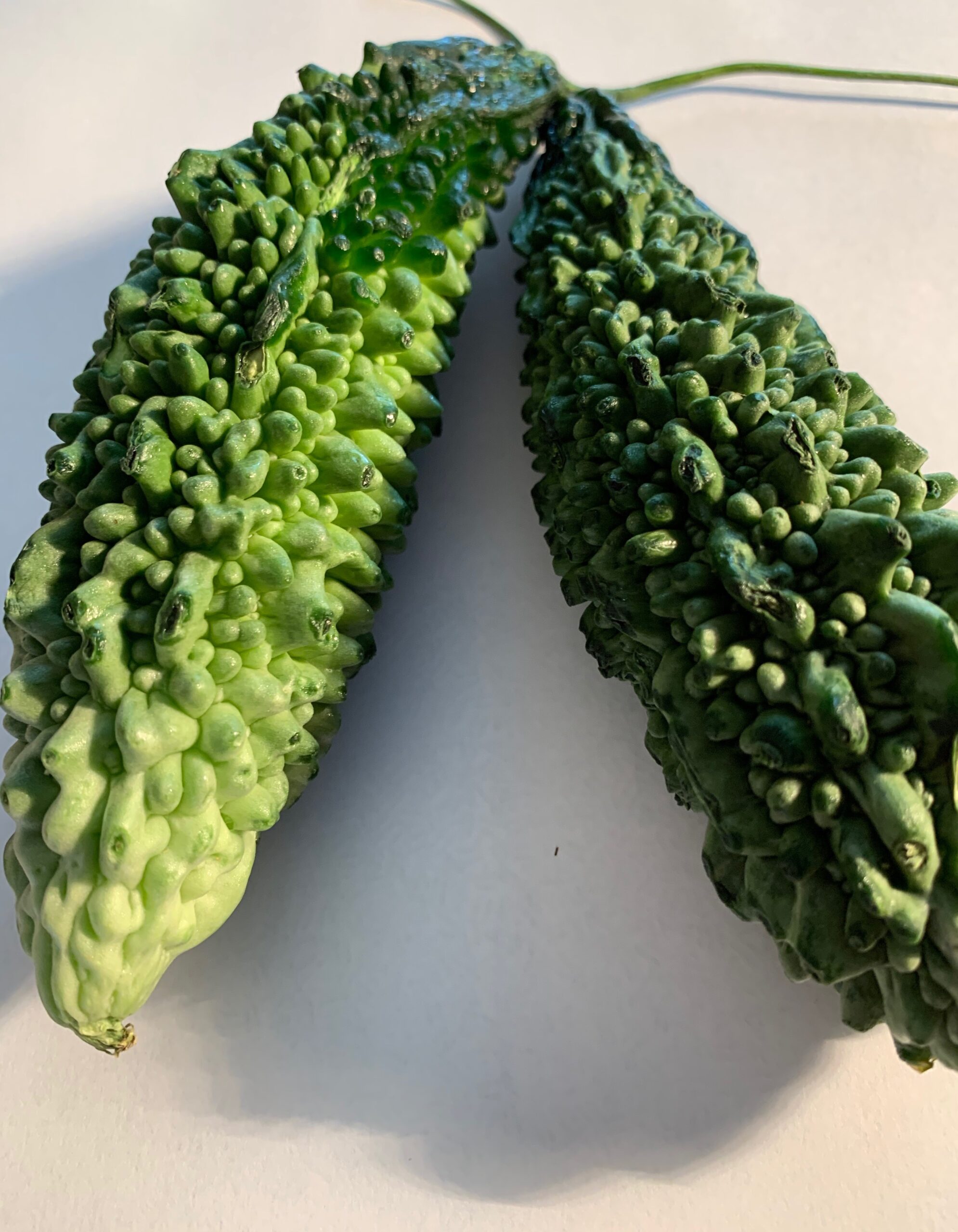Ridge gourd is a bottle-shaped dark green vegetable with ridges on the outside and a spongy white pulp with soft seeds inside. Two varieties of smooth and ridged ones are grown. If left to grow further it develops a fibrous tissue, seeds become hard and inedible. It contains insulin-like Peptides and Alkaloids that helps reduce sugar levels in the body besides other health benefits. In this recipe, ” Turai / Peerkangai ” is sauteed and ground with roasted lentils, coconut, and red chilies. Traditionally “Peerkangai Thuvayal” is mixed with rice and eaten in Tamil Nadu for lunch/dinner. “Turai Subzee” is eaten with roti, Paratha or Naan.
Buying & Storage: Fresh ridge gourd is best stored in a refrigerator. They can be wrapped in a paper towel and placed in a plastic bag. It will stay crisp for a week.
History: Ridge gourd or Luffa is a vegetable in the Cucurbitaceae family with a scientific name Luffa Acutangula. It is also known as patola in Filipinos, ribbed luffa, angled luffa, silk gourd, dishcloth gourd, silk squash, Chinese okra, Sinqua, etc. The tender mild flavored pods are used in Indian, Chines, and Filipino cuisine.
Health Benefits of Ridge Gourd
- Acts as an anti-cancer, anti-aging factor at the cellular level with vitamin A (14% DV). Essential for the health of skin, hair, and vision.
- Good source of B complex vitamins thiamin, niacin (B3), pantothenic acid (B5), pyridoxine, and minerals.
- Helps reduce sugar levels with insulin-like peptides and alkaloids.
- Prevents cancer development with vitamin C (20% DV) that acts as a free radical scavenger.
- Relieves indigestion and constipation problems being rich in dietary fiber and smooth flesh.
- Reduce the risk of neural tube defects in newborn babies. Fresh Ridge gourd contains 7 mug (microgram) Folate.
Nutrition Data for 100g raw ridge gourd
| Calories (kcal) …. 20 | Iron (mg) …….0.36 | Folates (mcg)….7 |
| Carb. (g)……4.35 | Calcium (mg)….20 | Niacin (mg) …….0.4 |
| Protein (g) …… 1.2 | Phosphorous (mg) …32 | Vitamin C (mg) ….12.0 |
| Fat (g) …… 0.2 | Magnesium (mg) ….14 | Vitamin A (IU) …410 |
| Fiber (g) …… 3.0 | Zinc (mg) …….0.07 | Thamin (mg) …….0.4 |
https://www.nutrition-and-you.com/luffa.html
Method 1. To make Ridge Gourd sauté
- Wash, peel the sharp edges, and cut ridge gourd with skin into cubes.
- Heat 2 tbsp. oil in a frying pan; add mustard seeds, spices, and curry leaves; when the mustard seeds pop, add the cut ridge gourd and stir well. Cover with a lid and turn heat to medium. Allow cooking for 3 min. (the ridge gourd will release its own water) ; open the lid and add cut tomatoes; cover and cook 3 more minutes; open the lid and sauté for 4 min. until all liquid is evaporated.
- Method 2 Ridge Gourd Chutney (Thuvayal)
- Wash, peel and cut ridge gourd in cubes.
- Heat 1 tbsp. oil in a frying pan; sauté ridge gourd until soft;(5 minutes) keep aside.
- Heat the remaining oil, add lentils, red chili, curry leaves and fry until lentils turn brown.
- Grind sauteed ridge gourd with seasoning, spices, coconut & tamarind until smooth.
Serve Ridge Gourd Saute / Thuvayal with Quinoa / Brown rice or use as a sandwich spread with multigrain bread or as a dip with chips.
Tips
Variation 1: The peel by itself can also be used to make chutney
Variation 2: Eggplant, Ginger, Carrots, or Orange peel can be made the same way. Variation 3: Substitute curry leaves with a bunch of cilantro leaves
Ridge Gourd = Turai/ Peerkangai

